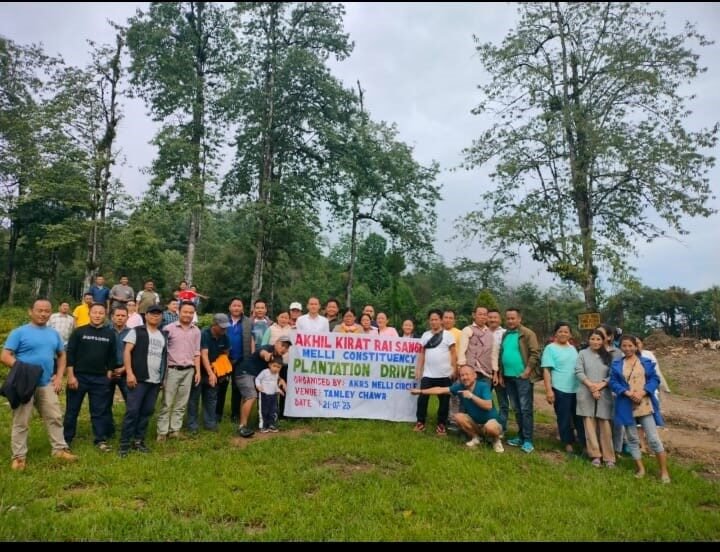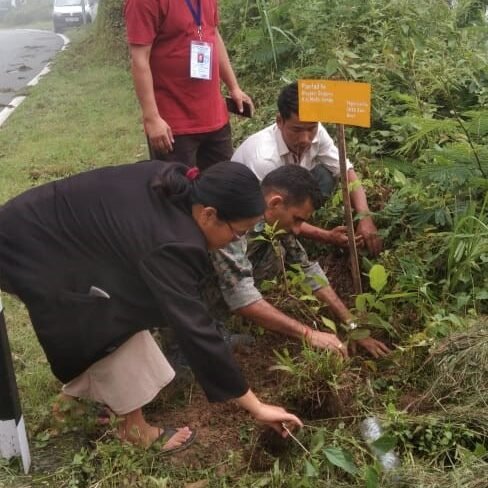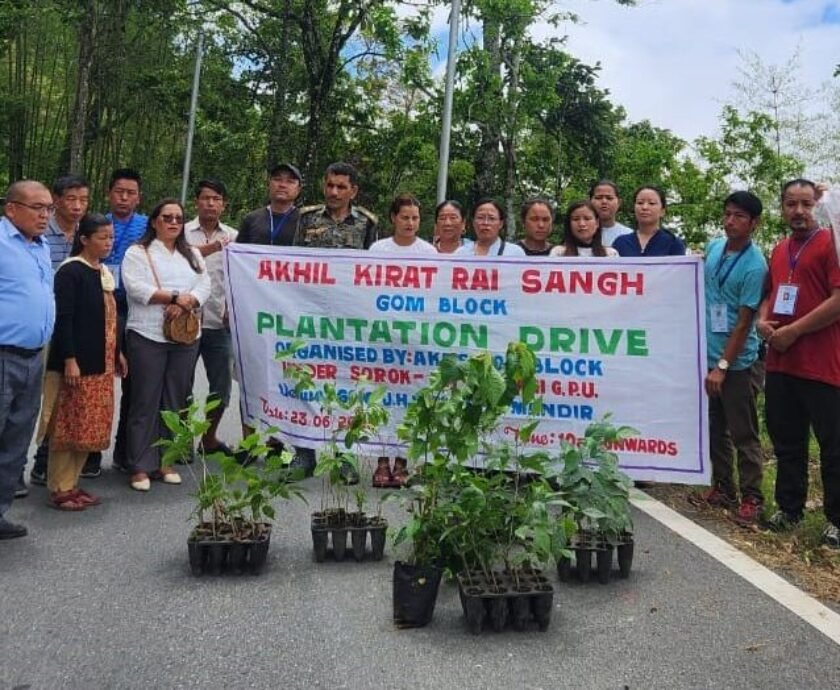The Kirat Rais today, as other indigenous Himalayan communities, are largely influenced by the religious practices of Hinduism and Christianity. Yet, on tracing our history and heritage through our sacred Mundhum, we find that at the heart of the Kirat Rai traditions and ideology are two key principles– ancestral worship and nature worship.
Nature worship or ‘animism’ believes that there is a symbiotic relationship between human beings and nature, and animism is a central philosophy of many indigenous cultures. In animist philosophy, nature is not merely a non-living thing that can be exploited for human gain, but instead nature is a living being with whom humans must live together in harmony. This belief is central to many Kirat Rai traditions. For example, during the bi-annual festivals of Sakela/Sakewa, the Rais worship the nature spirits of spring (Ubhauli) and autumn (Udhauli). Sakela/Sakewa therefore is both the name of the festival and the formless nature spirits that we revere.

Since animism believes in the close relationship between ‘humans’ and ‘non-humans’, indigenous animistic philosophy often goes hand in hand with environmentalism and the conservation of nature. With global warming, climate change, pollution and species extinction being some of the most pressing problems of our times, people across different regions of the world have started to turn towards ‘indigenous conservation’ and ‘animist environmentalism’. This is because indigenous people safeguard approximately 80 percent of the world’s remaining biodiversity.
For example, the Achuar indigenous people of South America actively work to protect the Amazon rainforest; and the indigenous youth of Indonesia have started a movement aiming at sustainable rural development through organic farming. Today, the role of indigenous people in enriching climate action has also been recognised by the United Nations Framework Convention on Climate Change (UNFCCC) because of the close ties between indigenous peoples and the natural environment.
Following the belief that the Kirat Rais are animists and therefore conserving the nature is our sacred duty, the Akhil Kirat Rai Sangh (AKRS) has been working to link Kirat Rai people’s animist philosophy with modern environmentalism through various initiatives. With this aim, on the 22nd of July 2023, the AKRS’ Melli Block, AKRS Namchi District organised a ‘plantation drive’ in Tamley Chawr area of South Sikkim. The Gom Block, AKRS Namchi District did a similar drive in the Gom Mandir area of South Sikkim on the 23rd of July 2023. As the name suggests, this involved planting saplings of various tree species native to Sikkim Himalaya as a way of safeguarding our natural environment, and the AKRS aims to continue such initiatives across Sikkim in the coming future.


References
Deer, J. (2022) Radical animism: Reading for the end of the world. BLOOMSBURY.
How Indigenous Peoples Enrich Climate Action (2022) United Nations Climate Change. Available at: https://unfccc.int/news/how-indigenous-peoples-enrich-climate-action
Indonesian indigenous youth return to the community (2021) If Not Us Then Who? Available at: https://ifnotusthenwho.me/films/indonesian-indigenous-youth-return-to-the-community/
Kirat Khambu Rai Sakela, Sakewa Festival: Udhauli, Ubhauli (2021) Himalayan Indigenous Cultures – History, Tribal, Tradition, Festival Info – Indigenous Cultures of the Himalayas. Available at: https://himalayancultures.com/cultures/khambu-culture/kirat-khambu-rai-sakela-sakewa/










